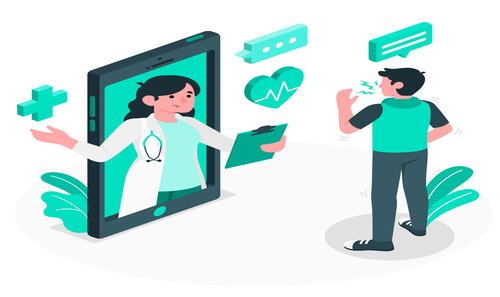


In 2025, healthcare providers are no longer questioning if they should move to the cloud, but rather how fast they can do it.
The healthcare industry is undergoing a major transformation in 2025, with Health Cloud adoption emerging as a top priority for providers worldwide. Rising patient expectations, regulatory shifts, and the demand for smarter care delivery are pushing hospitals and clinics to embrace cloud-based solutions. Unlike traditional systems, Health Cloud offers flexibility, scalability, and intelligence that healthcare organizations need to thrive in a rapidly evolving digital landscape.
Healthcare is shifting from a provider-driven model to a patient-first approach. Health Cloud enables providers to unify patient data across electronic health records (EHRs), wearables, mobile apps, and telehealth platforms. This 360-degree view of patient information helps doctors deliver more personalized and proactive care. Patients benefit from seamless communication, faster access to test results, and more engagement in their treatment journey.
Traditional on-premises systems are costly to maintain, requiring frequent upgrades and IT resources. In contrast, Health Cloud solutions are subscription-based, reducing capital expenditure while providing scalable infrastructure. Providers can optimize operations, automate routine workflows, and minimize administrative burdens. This directly translates into lower costs and better allocation of resources toward patient care.
One of the biggest drivers in 2025 is the integration of AI and analytics within Health Cloud. These tools allow providers to predict patient risks, detect diseases earlier, and optimize care pathways. For instance, predictive models can alert providers about patients likely to develop chronic conditions, enabling early interventions. Healthcare leaders are finding that AI-enabled Health Cloud platforms turn raw data into actionable insights, strengthening both outcomes and competitiveness.
Fragmented data has always been a challenge in healthcare. With Health Cloud, interoperability becomes easier. Providers can securely exchange patient data across systems, clinics, and even geographies. This is critical in 2025 as more organizations adopt value-based care models that require collaboration and data sharing between payers, providers, and patients.
Security and compliance remain top concerns in healthcare. Leading Health Cloud solutions now offer built-in HIPAA compliance, audit trails, and advanced cybersecurity measures. This reassures providers and patients that sensitive health data remains protected, while also helping organizations meet evolving global regulations without heavy in-house investments.
The pandemic accelerated the rise of telehealth, and by 2025 it is here to stay. Health Cloud makes it easier to integrate telemedicine platforms, wearable devices, and RPM (Remote Patient Monitoring) systems into core workflows. This supports hybrid care models where patients receive continuous monitoring at home, reducing hospital readmissions and improving satisfaction.
Conclusion
In 2025, healthcare providers are no longer questioning if they should move to the cloud, but rather how fast they can do it. Health Cloud has become the backbone of modern healthcare, enabling providers to deliver better care, lower costs, and stay competitive. Organizations that adopt Health Cloud today will be the true leaders of tomorrow’s healthcare ecosystem.
